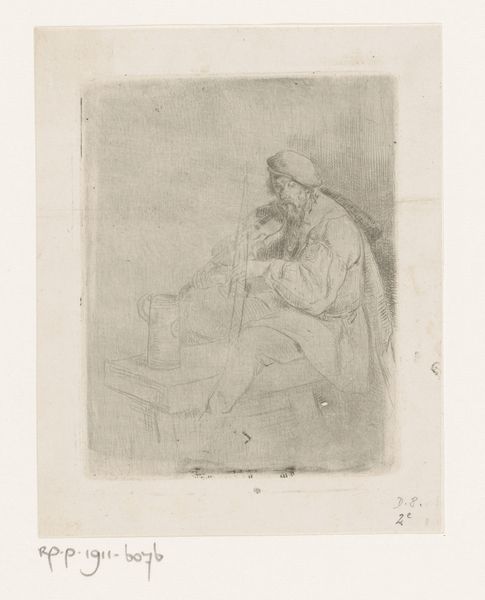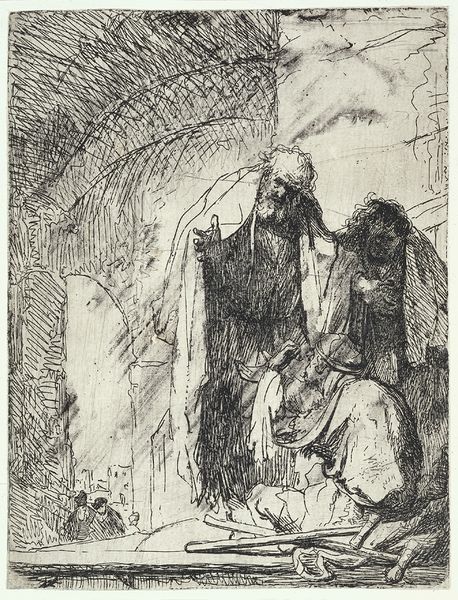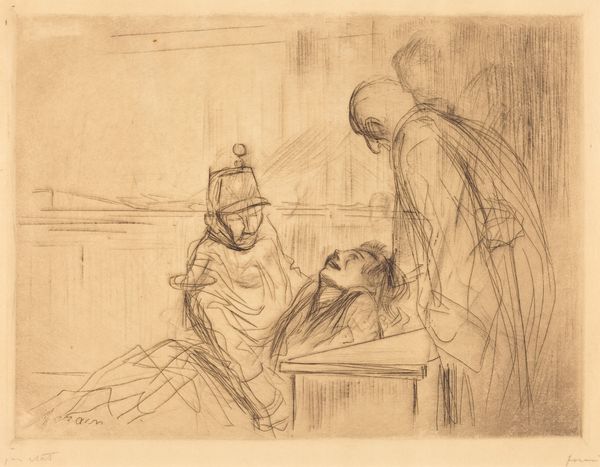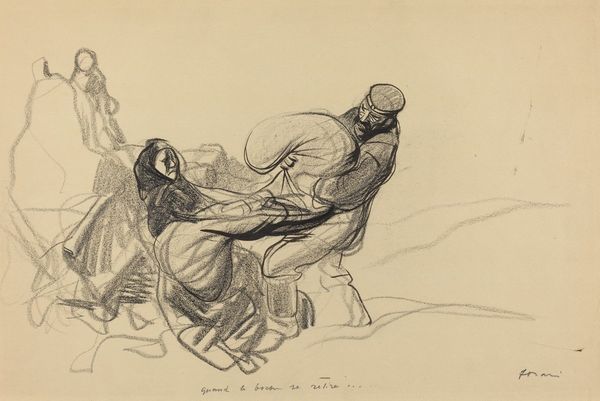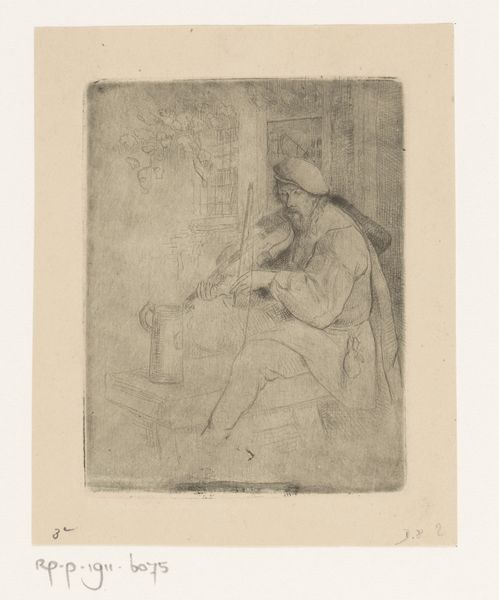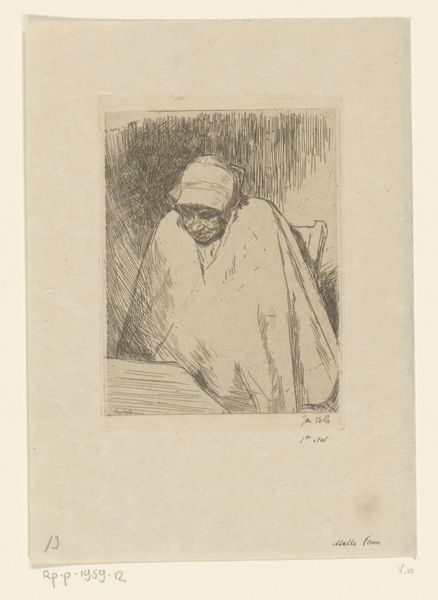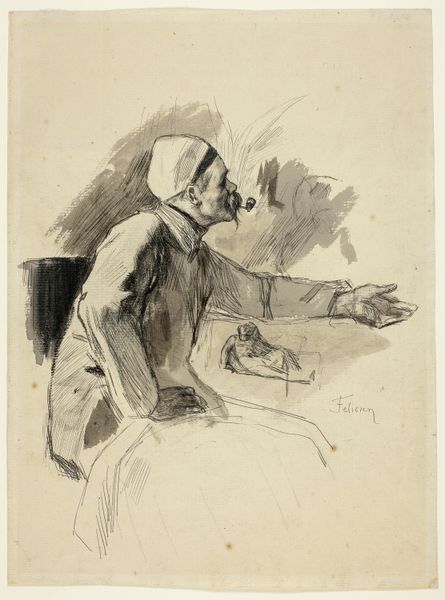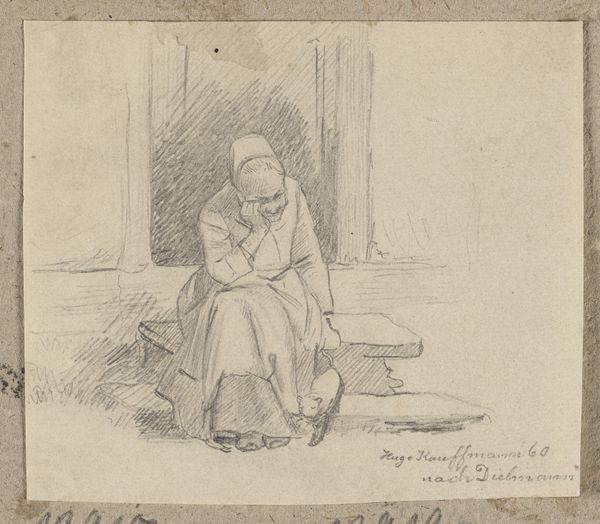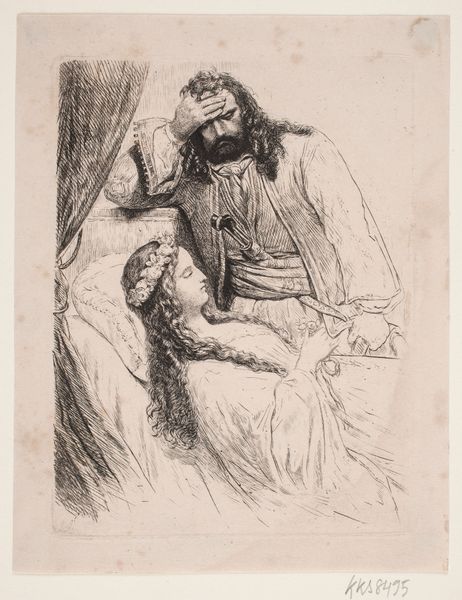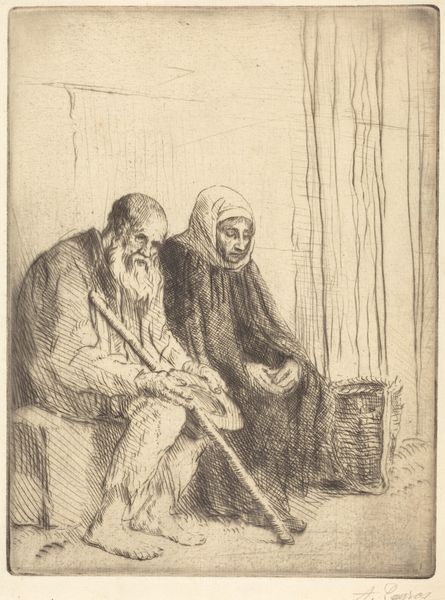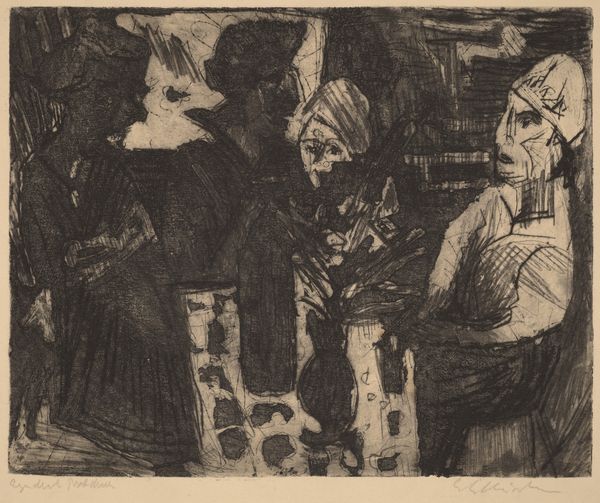
drawing, print, paper, pencil, chalk
#
portrait
#
pencil drawn
#
drawing
#
neoclassicism
# print
#
pencil sketch
#
charcoal drawing
#
paper
#
pencil drawing
#
pencil
#
chalk
#
portrait drawing
Dimensions: 182 × 223 mm
Copyright: Public Domain
Editor: We're looking at "The Spirit of Knowledge," a drawing by Henry Fuseli from 1798, housed here at the Art Institute of Chicago. It looks like pencil, chalk, and possibly charcoal on paper. I'm struck by its sketch-like quality and the almost dreamlike, ethereal figures. What do you see in this piece, considering its materials and creation? Curator: Considering the social context and materiality, what interests me most is the process of production. Fuseli utilizes readily available materials—paper, pencil, chalk—elevating them through his skill. Think about the accessibility of these materials versus the highly prized oil paints and canvases often favored at the time. It challenges the traditional hierarchy. Why do you think Fuseli chose to create in this medium? Editor: Perhaps because it allowed for more immediate expression? It feels less labored than a finished painting, more spontaneous. Could this suggest a different value system, prioritizing the act of creation over a polished end product? Curator: Precisely! Furthermore, the choice of materials reflects a potential democratizing impulse. Art isn’t solely the domain of the wealthy when made with affordable materials. The use of "humble" materials also aligns with Neoclassical ideals emphasizing simplicity and restraint after the extravagance of the Rococo era. How does the sketch-like quality relate to this social context, in your opinion? Editor: I guess the rough finish suggests a less "precious" object, meant perhaps for study or intellectual exploration rather than ostentatious display? I never thought about how materials could speak so loudly. Curator: Exactly. Fuseli's artistic labor, displayed through these deliberate choices, gives value and importance to these ordinary materials, altering our perception. The consumption of art, then, shifts from mere possession to appreciation of skill and social statement. It certainly opens new avenues for art history analysis. Editor: I hadn't considered it from that angle before. This really highlights the importance of the "how" as well as the "what" of art.
Comments
No comments
Be the first to comment and join the conversation on the ultimate creative platform.
